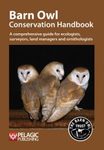Handbook / Manual
Coming Soon
By: Melanie A Findlay(Author), Patrick JC White(Author)
160 pages, colour illustrations
![The Otter Field Survey and Monitoring Handbook The Otter Field Survey and Monitoring Handbook]()
Click to have a closer look
About this book
Customer reviews
Biography
Related titles
About this book
This book is the comprehensive guide for ecologists undertaking site surveys for Eurasian otters. It describes how to carry out initial field-sign surveys, select sites for camera-trapping, deploy camera-traps and interpret data. The methods described are underpinned by years of research.
Field-signs have historically been used as the main approach for surveying otters. This book illustrates what to look for and where to find different types of field-sign. It examines whether field-signs are a good predictor of otter activity and describes the limitations of such surveys. Optimal deployment of camera-traps to monitor otter dens (holts) is presented, together with an account of what type of behaviour and activity levels can be expected when they are used for birthing (natal holts), cub-rearing and casual resting.
Illustrations, camera-trap images and descriptions of the animals' behaviour bring the process to life, supported by the latest scientific evidence for application in site surveys and licence applications.
- A practical guide to field-sign surveys in freshwater and coastal habitats, how to search for holts and what field-signs can be used to identify otter presence.
- When and how to deploy camera-traps at potential holts; optimising set-up for good data quality, and understanding constraints of the equipment, the site and the species.
- Organising camera-trap data to quantify activity patterns.
- Interpretation of camera-trap footage; identification of males and females, resting activity and natal activity.
Customer Reviews
Biography
Mel Findlay is a seasoned consultant ecologist with over 25 years of experience. She specialises in otter surveys and is a longstanding member of the IUCN Otter Specialist Group. An early adopter of camera traps, Mel realised the potential for this technology to provide much-needed information on otter ecology. She is a Visiting Senior Research Fellow at Edinburgh Napier University.
Pat White's research focuses on practical applications for conservation of threatened species. He is an Associate Professor at the Centre for Conservation Science at Edinburgh Napier University and is an experienced field biologist. He is a member of the IUCN's Otter Specialist Group and a Fellow of the Chartered Institute of Ecology & Environmental Management.
Handbook / Manual
Coming Soon
By: Melanie A Findlay(Author), Patrick JC White(Author)
160 pages, colour illustrations











































